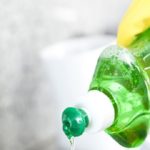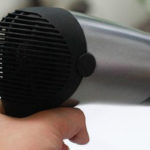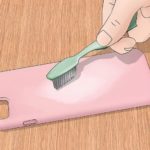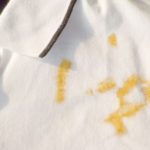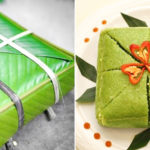Step 1: Sprinkle baking soda on the stovetop.
Use enough to lightly cover the surface of the dirt you want to clean. No need to measure the exact amount of baking soda you use, when your stove is really dirty, you can sprinkle a thicker layer.

Sprinkle Baking soda on the area to be cleaned
Pro Tip: You can mix baking soda with water, wait for them to dissolve, and then spray or pour them onto the stovetop, making the surface slightly wet. Or to avoid accidentally pouring too much, you can put baking soda in perforated containers like pepper shakers, then sprinkle evenly on the stovetop.
Step 2: Soak a cloth or large piece of fabric in soapy water
This cloth/fabric should be large enough to cover the entire stovetop area where baking soda is sprinkled.

Soak a large piece of fabric in soapy water
Step 3: Cover the fabric soaked in soapy water on the glass surface with baking soda.
If you soak in too much water, gently wring it out before covering the stove. Leave the fabric on for about 15 minutes.
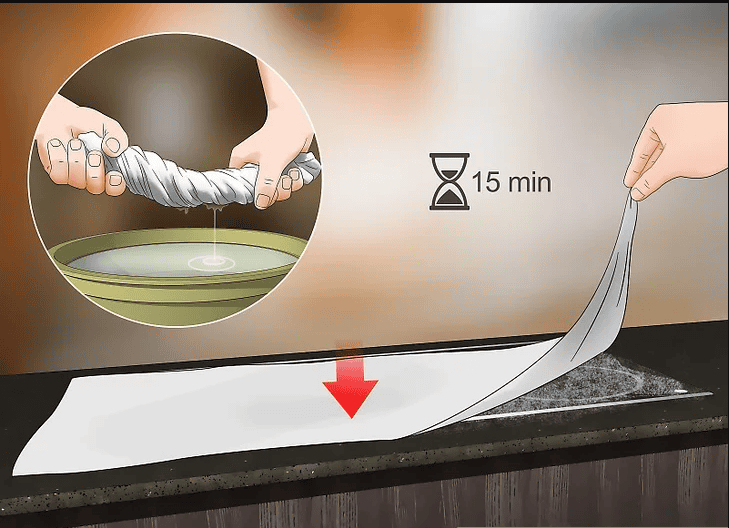
Cover the fabric soaked in soapy water on the stovetop
Pro Tip: If you want to clean the entire stovetop surface, use a large covering or multiple small pieces of fabric to cover the entire surface.
Step 4: Clean the stove
After 15 minutes, use the cloth/fabric that you covered on the stovetop to clean the stove, thoroughly clean the areas you want to clean, and wipe off stubborn stains. After cleaning, use a sponge or damp cloth to clean up any baking soda spilled from the stove. You have completed the task of cleaning the glass stovetop with Baking soda, and the stove is now clean and shiny!
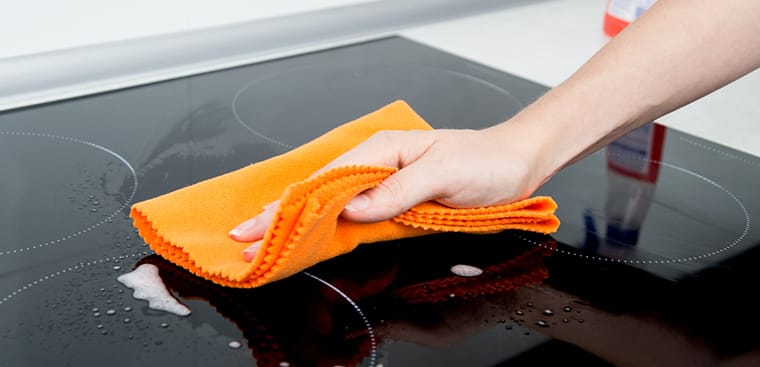
Thoroughly clean the stove
Tips for keeping your glass stovetop clean and beautiful
Wipe it clean after cooking.
The dirt is better cleaned early, because when left for a long time, they will stick and affect the aesthetics of the stove, making it difficult to clean later.
The overflow on the stovetop will burn and harden on the stovetop if not cleaned early.

Wipe the stove after each use
Note:
Remember to wait for the stove to cool down before cleaning, the high temperature of the stove can cause burns!
Some dirt like glue, candle wax is usually difficult to remove. You should use specialized knives that are not too sharp to scrape them off without leaving any scratches.
Clean the dirt as early as possible. If you spill something on a ceramic stove and do not clean it up quickly, it will be difficult to remove later. Overflow on the stovetop that is not cleaned early will burn and harden on the stovetop in subsequent uses. So, the sooner you clean your stove, the better.
Note: If you spill something while using the stove, wait for it to cool down before cleaning. Otherwise, you may get burned.
Avoid ammonia-based cleaners. Cleaning with an ammonia/water mixture or a cleaning product containing ammonia cannot effectively clean anything except stains on fabric (bleach). In addition, using such cleaning agents can lead to corrosion on the surface.
- Avoid abrasive cleaners. Chemical cleaners like Comet and Ajax will damage your ceramic tile mask. Do not use these products.
- Similarly, steel wool and abrasive scouring pads will scratch the glass surface of your ceramic electric stove.
Above is a guide to clean ceramic glass kitchen countertops, electric stoves, and induction stoves. This method may not be effective for low-quality surfaces, etc.


























